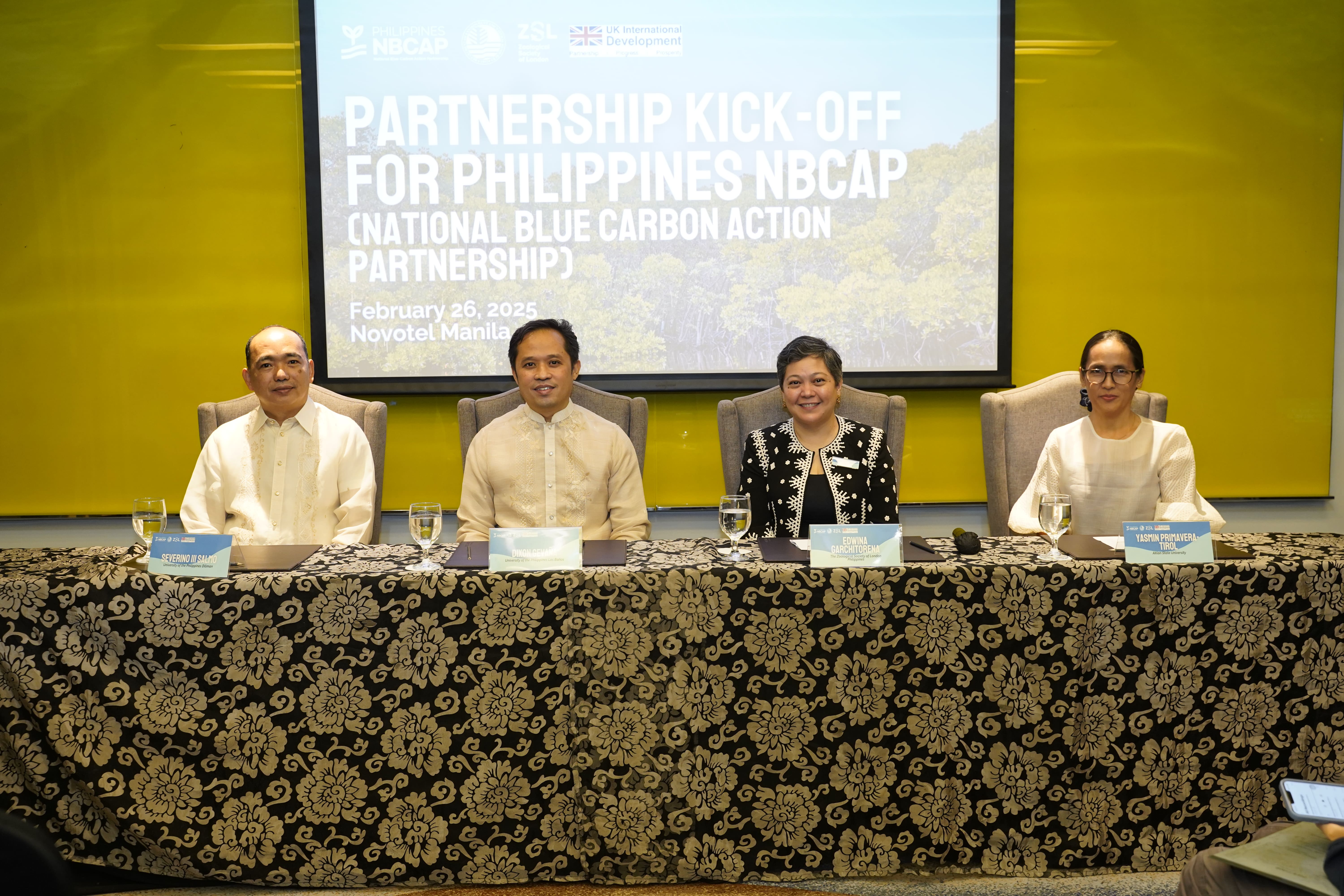How life in shallow waters is deeply needed to fight climate change
Zoological Society of London partners with DENR, WEF, UK gov't to help nourish PH coastal wetlands
By Mat Richter
It’s no news that carbon dioxide traps heat, causing a warming climate. But what helps trap the former? More importantly, what does so in large amounts?
Forests, oceans, and soils all play a vital role in taming the Earth’s rising temperatures by acting as carbon sinks. This means they absorb more CO2 than they emit.
Meanwhile, “blue carbon” is carbon stored in marine and coastal ecosystems. Blue carbon ecosystems including mangroves, salt marshes, and seagrasses are those habitats found in shallow waters.
These coastal wetlands might seem unassuming at first glance, but don’t be fooled! They have a superpower. It’s one that could save us humans.
Current studies denote they store three to five times more carbon per equivalent area than tropical forests, the US NOAA's National Ocean Service noted. Each year, they sequester (capture then store long-term) carbon 10 times greater than mature tropical forests, the agency stressed.
Finding the silver lining in a heating planet, a conservation organization saw the potential for blue carbon and teamed up with like-minded institutions to combat the climate crisis.

Curbing climate change with blue carbon
Zoological Society of London (ZSL) PH kicked off the National Blue Carbon Action Partnership (NBCAP) on Feb. 26 at a hotel in Quezon City to help conserve and restore coastal ecosystems in the country.
Led by the Department of Environment and Natural Resources and supported by World Economic Forum’s Ocean Action Agenda and UK government’s Blue Planet Fund, the initiative seeks to integrate blue carbon strategies into local policies and enhance coastal resilience and economic opportunities.
Habitats of priority include mangroves, seagrasses, and tidal marshes.
"LGUs mostly spend their budget on disaster response, but not on preparedness and prevention. So, it has to be institutionalized into our local governments so that we have science-based and community-led blue carbon ecosystem conservation and management," said Dr. Yasmin Primavera, professor at Aklan State University.
To recall, the Philippines joined WEF's BCAP through a memorandum of understanding during COP29 in Dubai in 2023. Two years later, Palawan, Surigao, and Tawi-Tawi now hold the highest blue carbon stocks, while the Verde Island Passage accounts for around 10 percent of the national total.
By end of June 2025, PH NBCAP aims to have drafted a Blue Carbon Action Roadmap with all relevant stakeholders, backed by scientific research with identified policy, collaboration, and investment needs.

“The restoration of our blue carbon ecosystems is essential to the nation’s environmental and economic future. They serve as natural defenses, sources of food and livelihood, and carbon sinks where carbon can be absorbed and stored,” said Edwina Garchitorena, country director of ZSL PH.
For over a decade, research on mangroves’ carbon storage has been conducted in the Philippines, but access remains limited. NBCAP aims to bridge this gap by improving data availability for conservation and policy.
"Through NBCAP, we will convene scientists, policymakers, and community stakeholders to develop and guide high-impact and high-integrity programs that aim to restore all blue carbon ecosystems," she added.
Proof of power
Restoring coastal wetlands has helped improve storm protection, food security, and livelihoods for local communities.
One standout example is the Katunggan Ecopark in Leganes, Iloilo, where abandoned fishponds were restored into a mangrove park which created jobs and strengthened marine biodiversity.
Evidence can also be found at the Katunggan It Ibajay eco-park in Aklan. It is a restoration project where visitors can now bask in the bounty of a mangrove forest and sight its wildlife.

"We need to complete the roadmap before June, which we will refine as we implement. It's calibrated to the UNFCCC targets, so the idea is to come up with a framework that can be localized based on different experiences,” Garchitorena expressed.
Coastal habitats thrive in different zones but share one thing in common: They're arguably the best defense against a heating climate. This is a gift from nature we must cherish. Even nature, which we vow to protect from polluting activities, is helping fight the crisis we caused. So, what's your excuse for being a bystander?